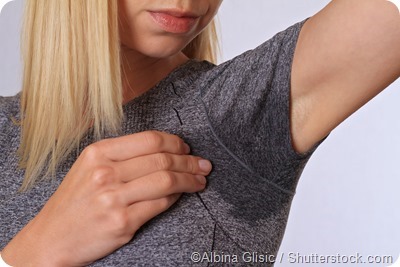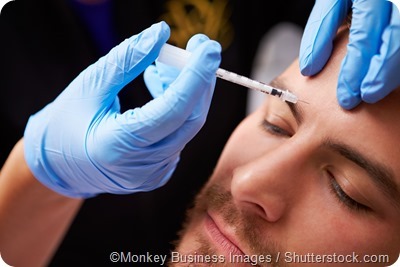Hyperhidrosis refers to excessive sweating that does not necessarily occur in response to the body becoming overheated by exercise or a hot environment, for example. Although the condition does not pose any significant health risk, it can disrupt daily activities, causing embarrassment, stress, and sometimes even depression.
The sweating may affect the whole body, in which case it is referred to as generalized hyperhidrosis or only a particular body part such as the underarms, face, groin, or soles of the feet, in which case it is referred to as localized hyperhidrosis. The condition usually affects both sides of the body, both hands or both feet, for example.
In many individuals, no cause of the condition can be established, in which case the condition is referred to as primary hyperhidrosis. This is thought to be caused by an abnormality in the part of the nervous system that cools body temperature (the sympathetic nervous system).
When a cause can be established, the hyperhidrosis is referred to as secondary. This secondary form may be triggered by a variety of factors, some of which include:
- pregnancy
- the menopause
- anxiety
- certain medications
- hypoglycaemia (low blood sugar)
- hyperthyroidism (overactive thyroid gland)
- infection
Generalized hyperhidrosis
When a person has generalized hyperhidrosis, large areas of the body are affected. It usually occurs in adults, both while they are sleep and while they are awake. Examples of triggers that may lead to this type of hyperhidrosis include the following:
- Exercise
- Humidity or heat
- Infections such as tuberculosis or HIV
- Metabolic diseases and disorders such as hyperthyroidism, diabetes, hypoglycemia, or gout
- Malignancies such a Hodgkin disease
- Severe stress
- Certain medications
- Menopause
Localized hyperhidrosis
This type of hyperhidrosis usually affects the armpits, face, palms, or soles of the feet. It usually affects adolescents, although it can also begin in childhood or infancy. It does not usually occur while a person is asleep. Examples of triggers that may lead to this form of the condition include:

- Stress, particularly anxiety
- Heat or humidity
- Consuming certain foods and drinks such as spices, chocolate, citric acid, or coffee
- Spinal cord injury
Prevalence
It is difficult to say how many people develop hyperhidrosis as there are no guidelines to determine exactly what constitutes “normal” sweating, but estimates suggest that the worldwide prevalence is between 2% and 4%, without any particular gender predisposition.
There are differences in prevalence globally, with one study, for example, having shown a prevalence of 2.9% in the US and up to 5.0% prevalence in certain areas of China.
Prognosis and treatment
Hyperhidrosis can be managed with treatment, which is decided upon patients’ discussion of the condition with their physician. Examples of treatments are described below.
Antiperspirants
The first line of treatment is antiperspirants containing aluminium chloride, which can be used to control excessive underarm sweating by blocking the sweat ducts.
Medicines
Some medications that prevent the sweat glands being stimulated are prescribed for certain types of hyperhidrosis where the face is affected by excessive sweating.
Iontophoresis
This is a technique where a low current of electricity is applied to affected areas to temporarily block sweat glands. The technique is most effective at treating the hands and feet.
Botox injections
Botulinum toxin type A can be used to treat excessive armpit sweating by temporarily blocking nerves that stimulate sweat secretion.

Endoscopic thoracic sympathectomy (ETS)
This is a minimally invasive surgical technique that is used to treat severe cases of hyperhidrosis that do not respond to other treatments. A nerve is cut in order to switch off the signal that would usually trigger excessive sweating.
Underarm surgery
This is performed to remove sweat glands in the armpits, with techniques including excision, laser therapy, liposuction, and curettage.
Further Reading
Last Updated: Feb 26, 2019